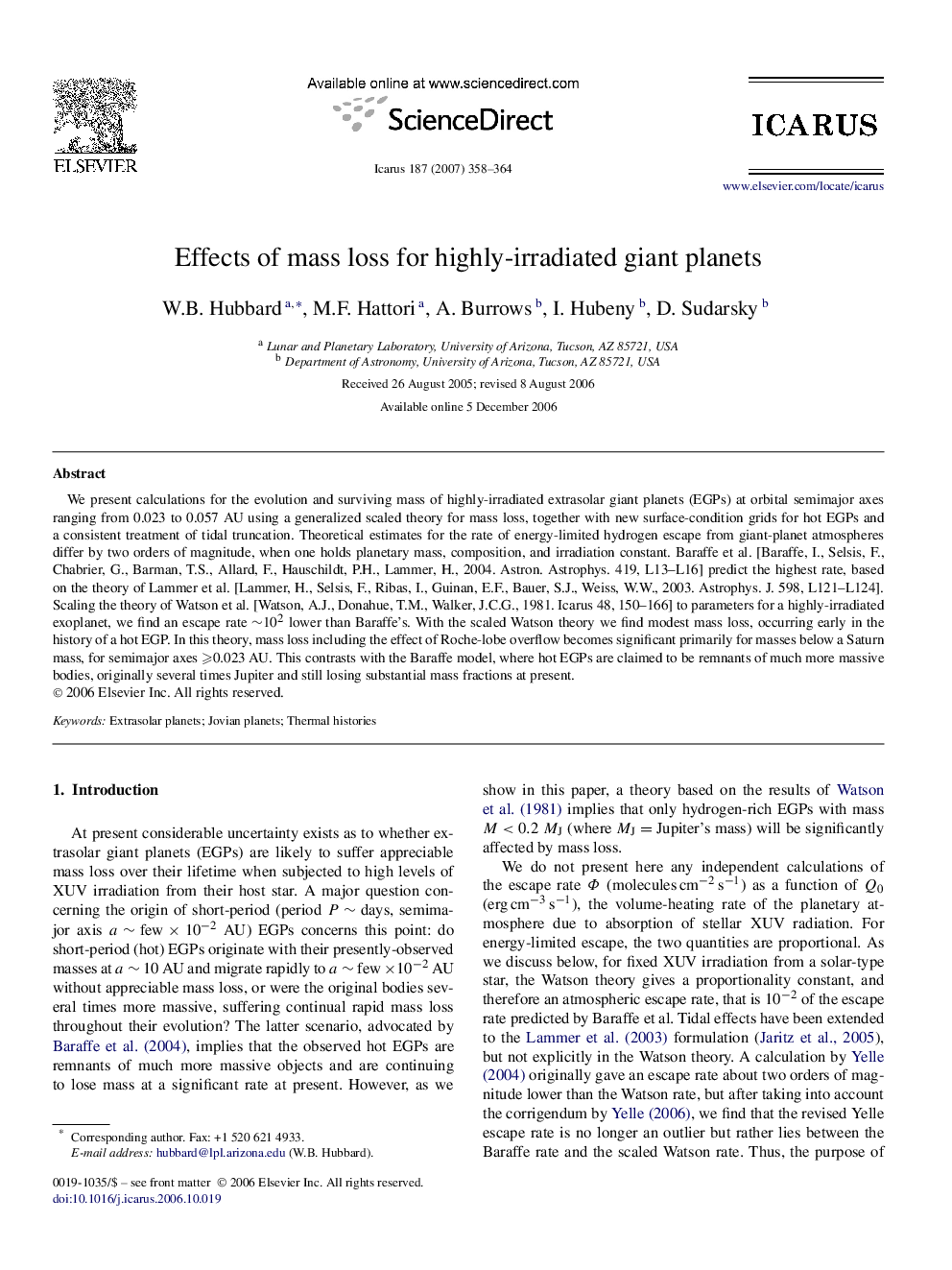| کد مقاله | کد نشریه | سال انتشار | مقاله انگلیسی | نسخه تمام متن |
|---|---|---|---|---|
| 1775410 | 1021193 | 2007 | 7 صفحه PDF | دانلود رایگان |

We present calculations for the evolution and surviving mass of highly-irradiated extrasolar giant planets (EGPs) at orbital semimajor axes ranging from 0.023 to 0.057 AU using a generalized scaled theory for mass loss, together with new surface-condition grids for hot EGPs and a consistent treatment of tidal truncation. Theoretical estimates for the rate of energy-limited hydrogen escape from giant-planet atmospheres differ by two orders of magnitude, when one holds planetary mass, composition, and irradiation constant. Baraffe et al. [Baraffe, I., Selsis, F., Chabrier, G., Barman, T.S., Allard, F., Hauschildt, P.H., Lammer, H., 2004. Astron. Astrophys. 419, L13–L16] predict the highest rate, based on the theory of Lammer et al. [Lammer, H., Selsis, F., Ribas, I., Guinan, E.F., Bauer, S.J., Weiss, W.W., 2003. Astrophys. J. 598, L121–L124]. Scaling the theory of Watson et al. [Watson, A.J., Donahue, T.M., Walker, J.C.G., 1981. Icarus 48, 150–166] to parameters for a highly-irradiated exoplanet, we find an escape rate ∼102∼102 lower than Baraffe's. With the scaled Watson theory we find modest mass loss, occurring early in the history of a hot EGP. In this theory, mass loss including the effect of Roche-lobe overflow becomes significant primarily for masses below a Saturn mass, for semimajor axes ⩾0.023 AU⩾0.023 AU. This contrasts with the Baraffe model, where hot EGPs are claimed to be remnants of much more massive bodies, originally several times Jupiter and still losing substantial mass fractions at present.
Journal: Icarus - Volume 187, Issue 2, April 2007, Pages 358–364